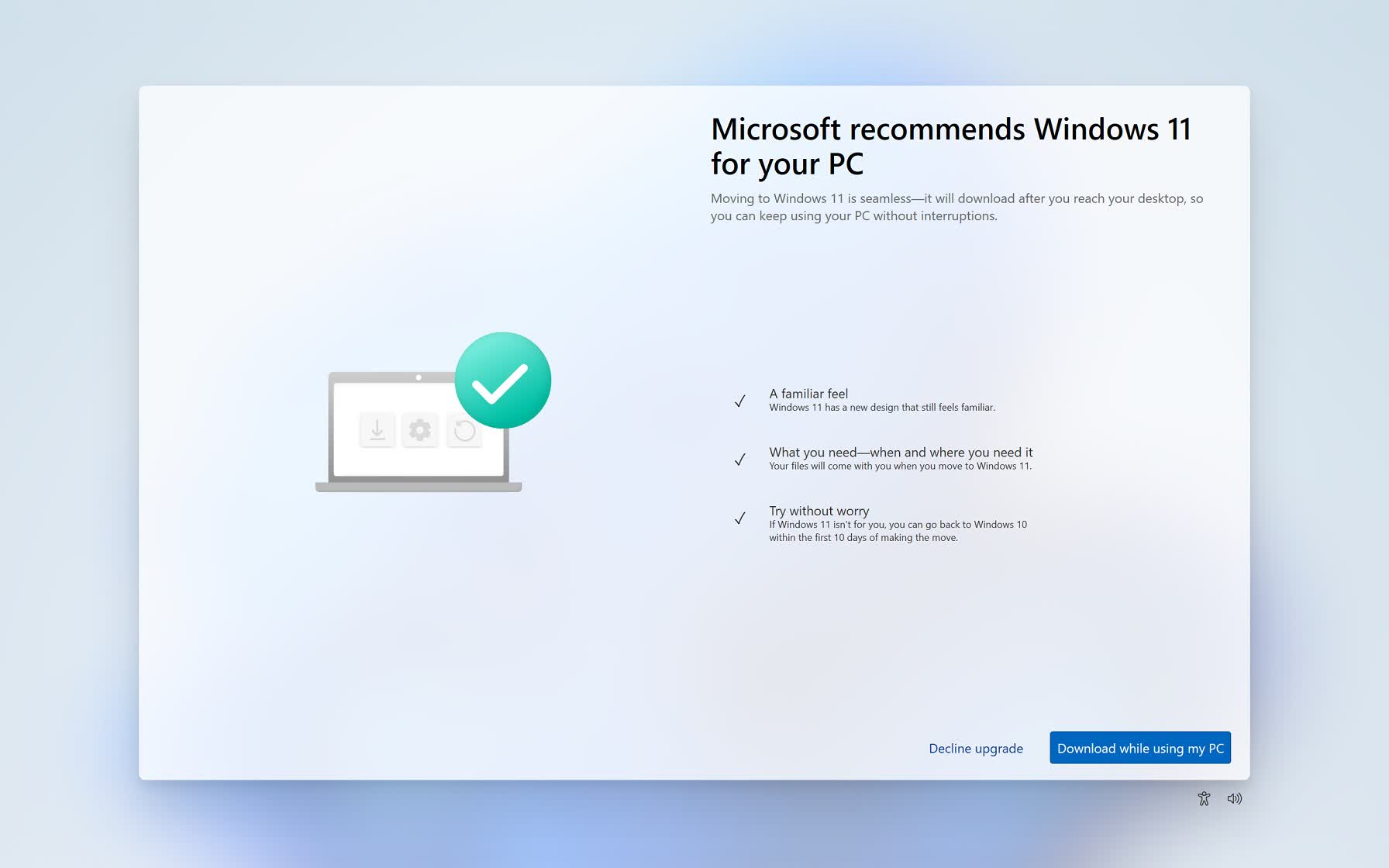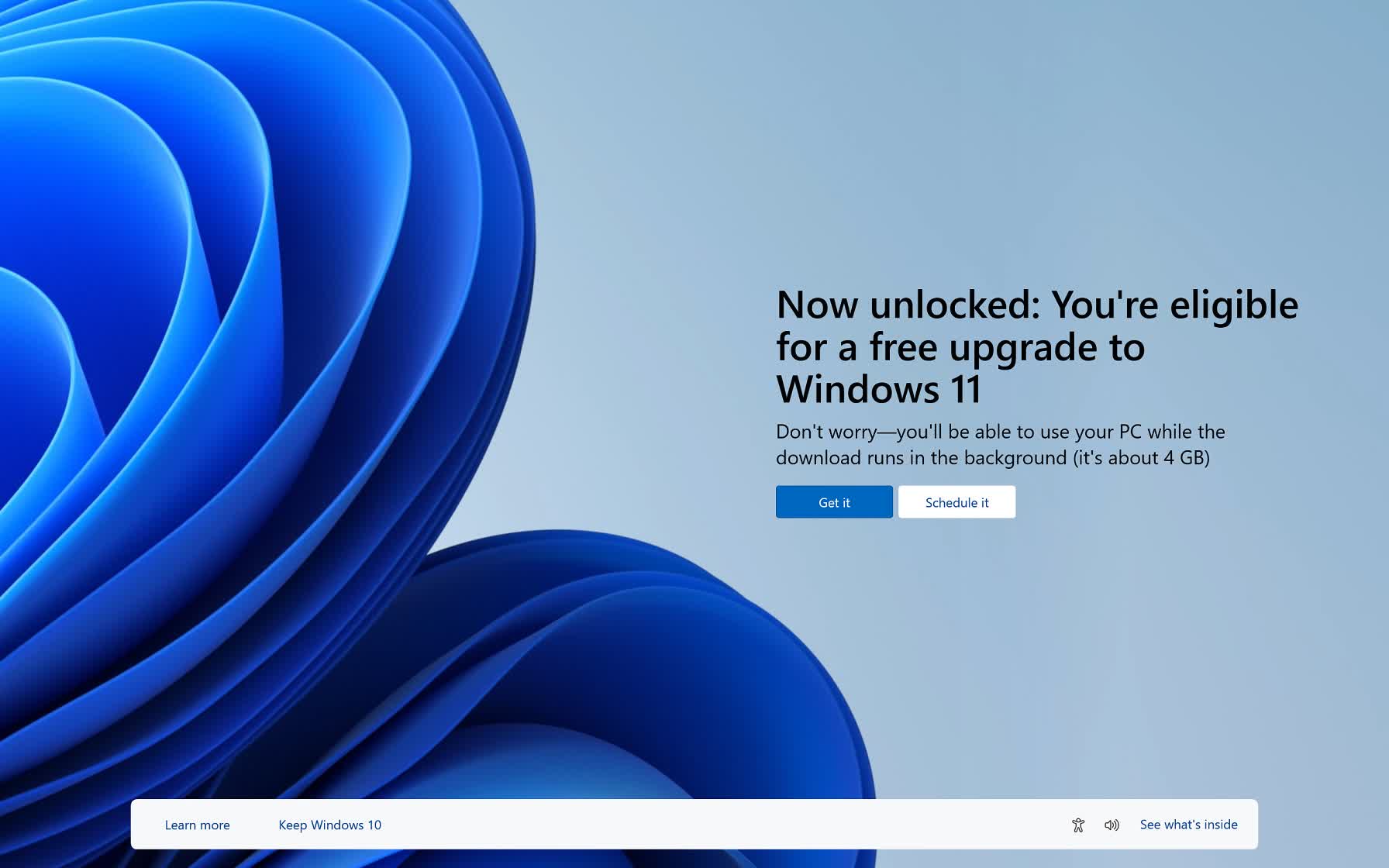Facepalm: Most people know that Microsoft really wants everyone to move onto Windows 11. But just in case there are some Windows 10 users still unaware of this fact, the company is once again nagging them to upgrade with full-screen, multi-slide popups.
The lengthy advertisement for Windows 11 was highlighted by Windows Latest after it installed the optional January update (in preview) on a Windows 10 machine.
The nagging Windows 11 upgrade promo consists of an excruciating number of screens (i.e., more than one): The first informs users that they can switch to Windows 11 for free and that they can still use their PC while the newer OS is set up in the background; another is Microsoft recommending the move and noting that users can revert to Windows 10 within the first ten days of upgrading; the last is for those who decide to stay on Windows 10, with a reminder that Windows 11 remains a free upgrade option. There is another panel that lists some of Windows 11 features, but this only appears for those who select the 'See what's inside' button.
It's interesting to see that Microsoft is up to its old tricks with the initial upgrade page, giving users the choice of getting Windows 11 or schedule an install later. The option for staying on Windows 10 is easily missable at the bottom of the screen.
In 2016, Microsoft's Get Windows 10 (GWX) pop-up offered users the choices of "Upgrade Now" or "Start Download, Upgrade later," meaning those who didn't want the then-newest OS had to close the pop-up using the standard X in the corner of the box. However, the company changed this by introducing a small and easily missed link for rescheduling or changing the upgrade. Following the alteration, anyone who clicked on the corner X was unwittingly giving consent for the upgrade to take place at the scheduled time. Microsoft later admitted that it had "gone too far" with that one.
The new pop-up appears in the latest preview update in testing, so all Windows 10 users might see it after installing February's cumulative update that arrives next week.
Microsoft pushed out these same full-screen Windows 11 nags last May. It seems the company feels that the outcry then wasn't enough to stop them from returning.
Windows 11 has been around for over two years now, yet its worldwide share is still just 26.5% compared to Windows 10's 67.4%, according to Statcounter. The newer OS is faring better among Steam survey participants, though, with almost half of those taking part using Windows 11. With Windows 10 reaching its end-of-life date in October 2025, expect Microsoft to push its Windows 11 upgrade path even harder.


